An Introduction To Bird Banding
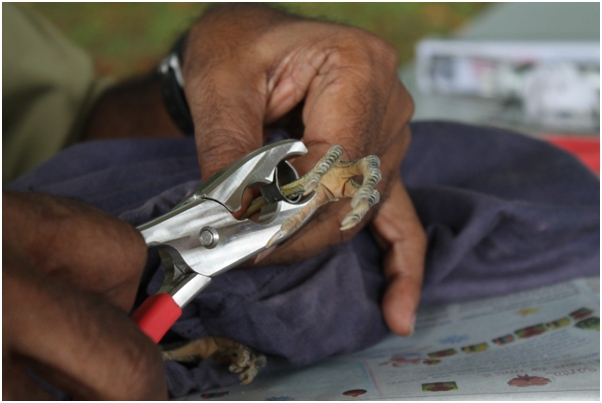
Senior Conservation Officer Ramakrishnan s/o Kolandavelu ringing a Malayan Night Heron (Gorsachius magnificus) with a metal ring engraved with a unique ID is onto one of its legs.
Bird banding or bird ringing is a technique employed in the study of birds. Rings are carefully fitted to the legs of the birds by trained people. Each ring usually carries a unique identification in the form of an alpha-numeric combination inscribed on it as well as a contact address for notification should someone come across a bird with a ring.
The bird banding programme is vital as it provides up-to-date data for properly managing sites for conservation. The results of these studies will greatly contribute to the long-term conservation of the birds and their habitats.
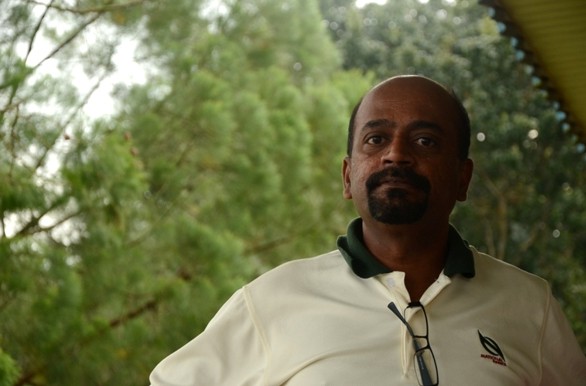
Senior Conservation Officer Ramakrishnan, is one of NParks’ most experienced bird ringers.
Behind the Scenes
The person who rings birds is referred to as a ‘ringer’ or ‘bird ringer’. A notable bird ringer in NParks is Ramakrishnan s/o Kolandavelu or Kris as he is known to his colleagues. He has been ringing birds for 16 years and conducts regular bird census and bird banding activities in the nature reserves of Bukit Timah and Central Catchment.
Ramakrishnan explains that like any other activity, good planning and preparation are the first steps to achieving a successful bird banding session.
As most bird banding activities take place in remote areas, preparing the logistics for bird banding is very important because it would be inconvenient and time consuming to have to return to office to retrieve missing items. Hence, equipment needed on-site are checked in advance before the activity and once again just before the team sets off for the bird banding site.
Some essential items for bird banding include bamboo poles, mist nets, bird bags, Vernier callipers, bird rings, and more.
Good decision making is also important. Take for example the lead ringer who spots storm clouds in the distance. He has to make the decision to either close the nets and seek shelter or take the chance that the rain may pass and continue with the bird banding.
“There are no model answers to refer to when a ringer decides to open or close the nets,” Ramakrishnan shares. Instead, he says the principle to decision making in this case is that “the safety of the participants as well as the well-being of the birds take priority”.
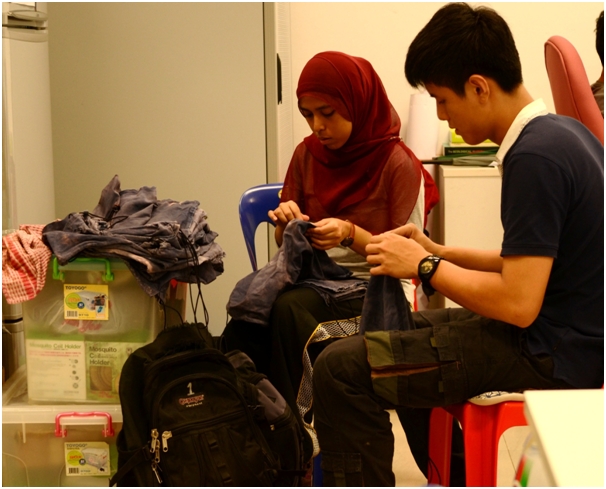
Interns Atiqah Bafadhal and Tan Jinn Song check the equipment in preparation for the next banding session.
Recruiting and Training
Gathering ringers who can commit regularly for bird banding is no walk in the park as Ramakrishnan shares. Bird banding requires a person who is dedicated, responsible and enjoys working with people and birds in an outdoor setting. Most times, staff and volunteers have many competing commitments such as family and other aspects of their jobs. To have a regular and committed group of people who are dedicated to bird banding is indeed a privilege.
However, Ramahrisnan also cautions patience. Participants do not get to ring or hold the birds during their first few sessions. Instead, they observe the bird banding process to better prepare themselves for the future sessions. As the participants join in more bird banding sessions, they will be given some roles and responsibilities. These roles include that of a scribe who records the measurements of the bird taken by the ringer.
Through these roles and responsibilities, participants will assimilate and grasp the significance of each of the processes, bringing them one step closer to becoming a ringer. After a few sessions, participants may express qualities that suggest confidence to handle birds.
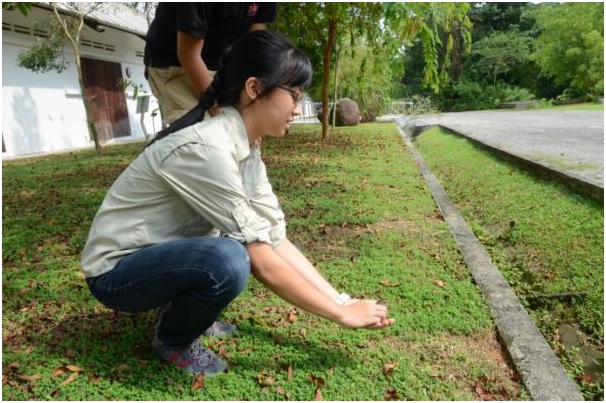
Central Catchment Nature Reserve volunteer, Lief Chan releasing her first Siberian Blue Robin (Luscinia cyane) after it has been ringed.
The lead ringer would assess if the participants are ready to handle their first bird. These participants will be taught by the ringer how to ring a bird and take basic measurements. Guided by the ringer the participant would eventually be able to carry out the entire bird banding process, from preparing the equipment, choosing the site, setting up the nets, retrieving birds from the net, taking measurements of the birds, culminating in their release back to the place where the birds were taken from.
To develop a pool of ringers with the expertise to carry out future bird banding sessions, it is important to have participants commit and regularly attend bird ringing sessions.
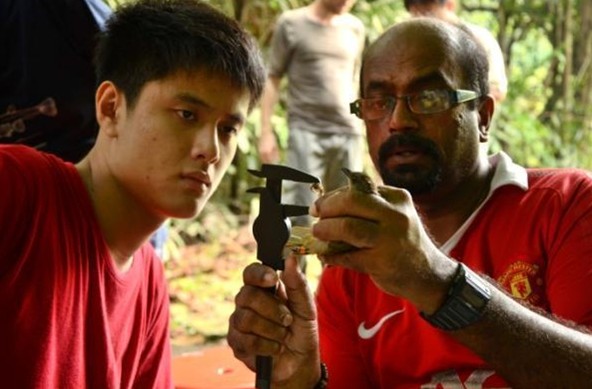
Ramakrishnan demonstrates to Tan Jinn Song, an intern, how to measure the bird’s tarsus (leg).
The Future
Currently, the bird banding programme in Singapore depends on a regular group of people who are able to not only ring birds competently but also run the entire bird banding activity. Training and mentoring potential ringers will ensure continuity of the programme and the success of future bird banding exercises.
It is thus necessary to reach out to the public, by conducting outreach programmes that promote bird banding and bird conservation to schools and organisations. Volunteer programmes also help cultivate interest in bird banding and consequently in bird conservation. For instance, HSBC volunteers have been helping with bird banding activities at the nature reserves of Bukit Timah and Central Catchment for several months. They assist staff in collecting data such as the measurements of the birds caught, recording the species that were caught and more. The information gathered will aid in decision making that will contribute to future studies as well as the conservation of the birds and their habitats.
Ramakrishnan hopes that with increased awareness and appreciation of the significance of bird banding in conservation management, more people will sign up as volunteers to help in bird banding activities.
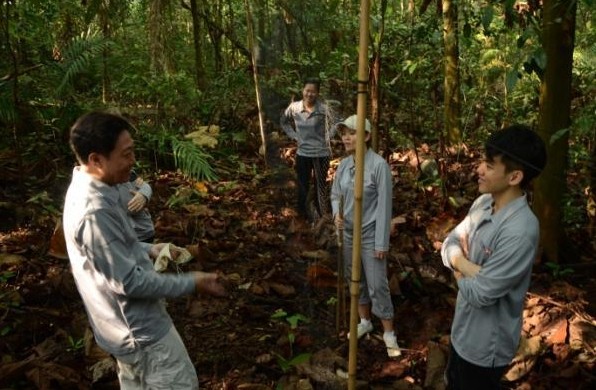
HSBC collaborated with NParks to conduct a bird banding session. Here, HSBC volunteers are setting up the bamboo poles holding up the mist nets used to catch the birds.
If you are interested to sign up as a volunteer, visit the NParks website for more information.
By Ryuta Teo Yong Chuan



Have views or comments on this article? Let us know via this form. If you would like to give us feedback on any other areas relating to our parks and gardens, please submit via https://www.nparks.gov.sg/feedback